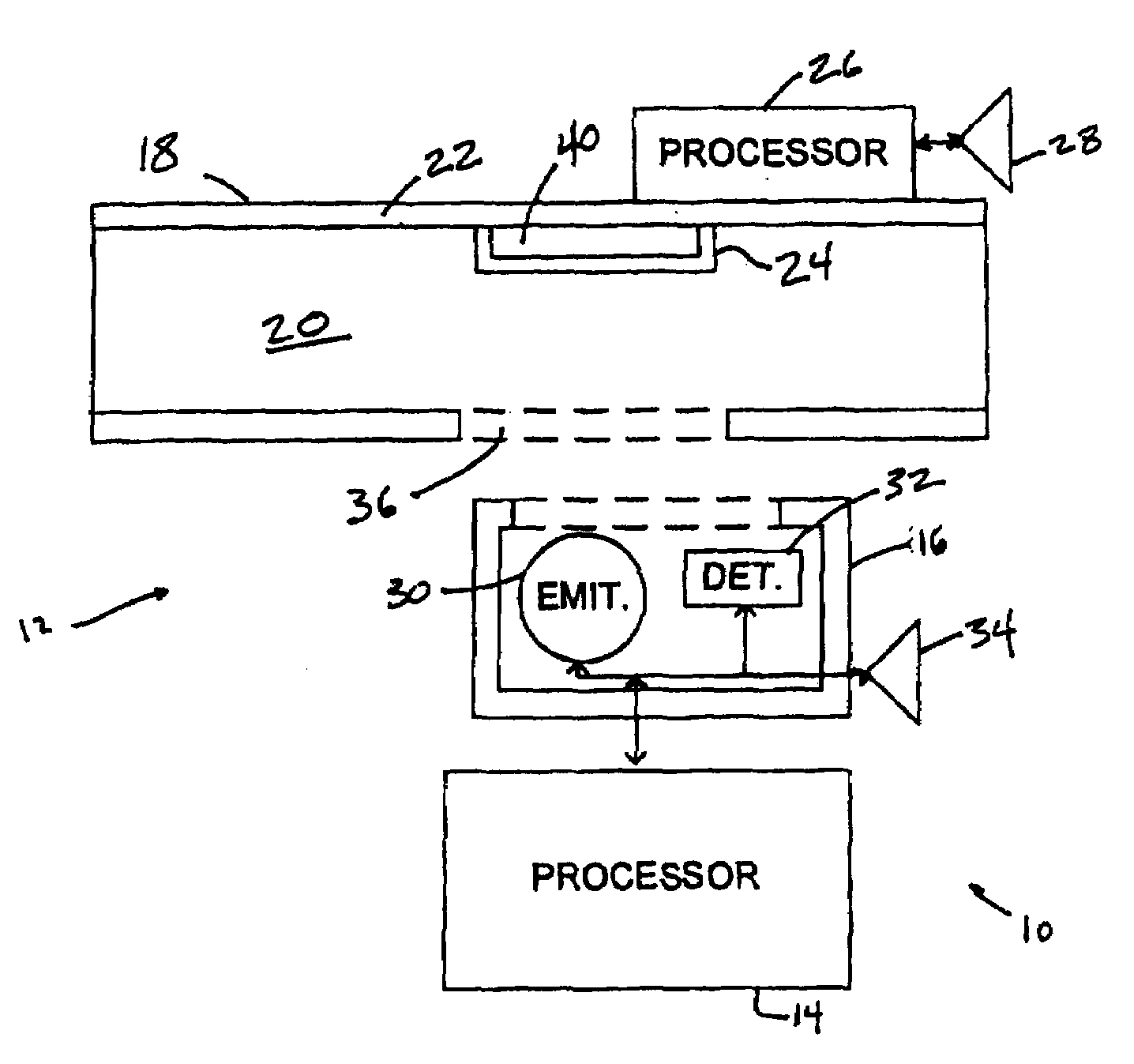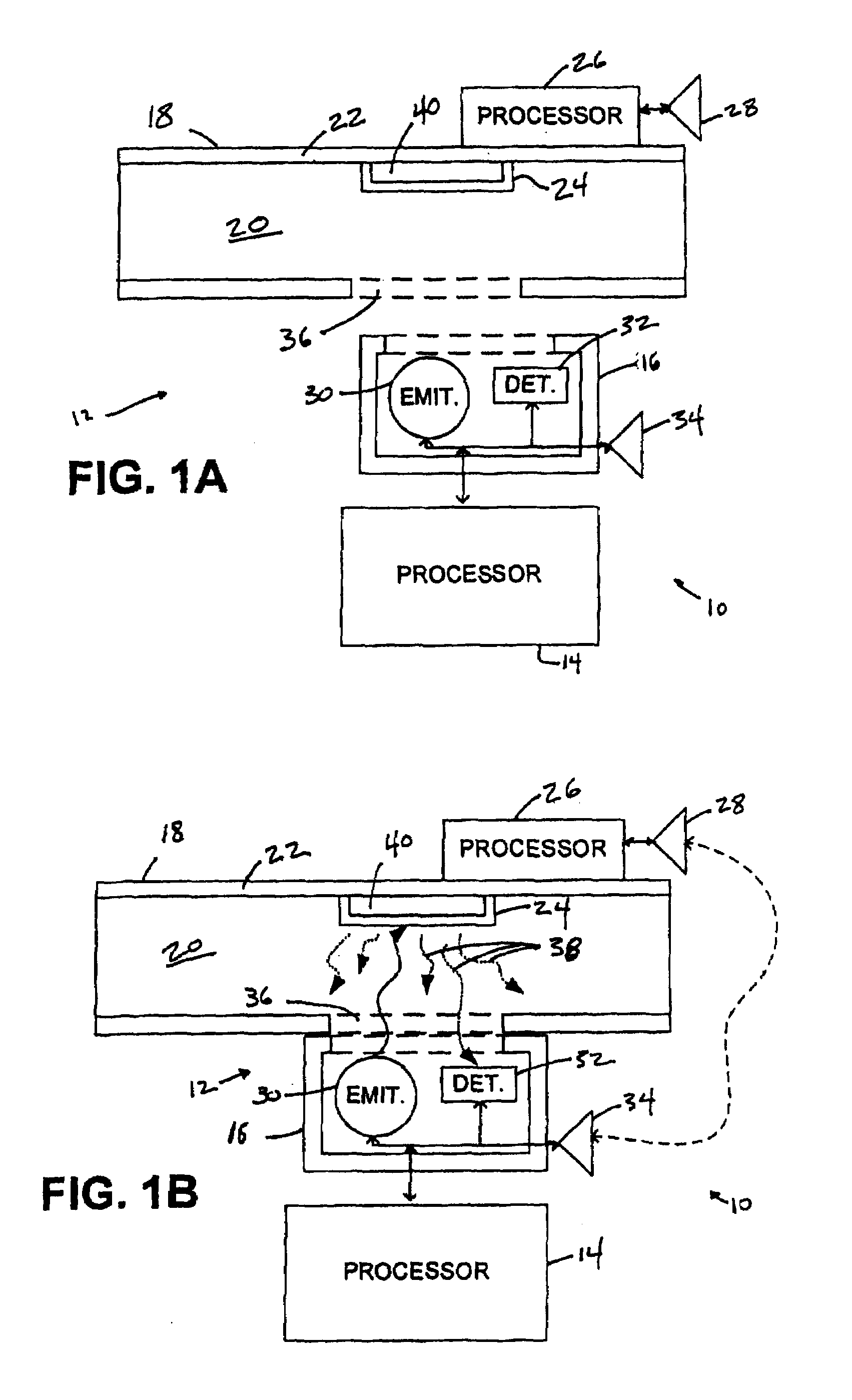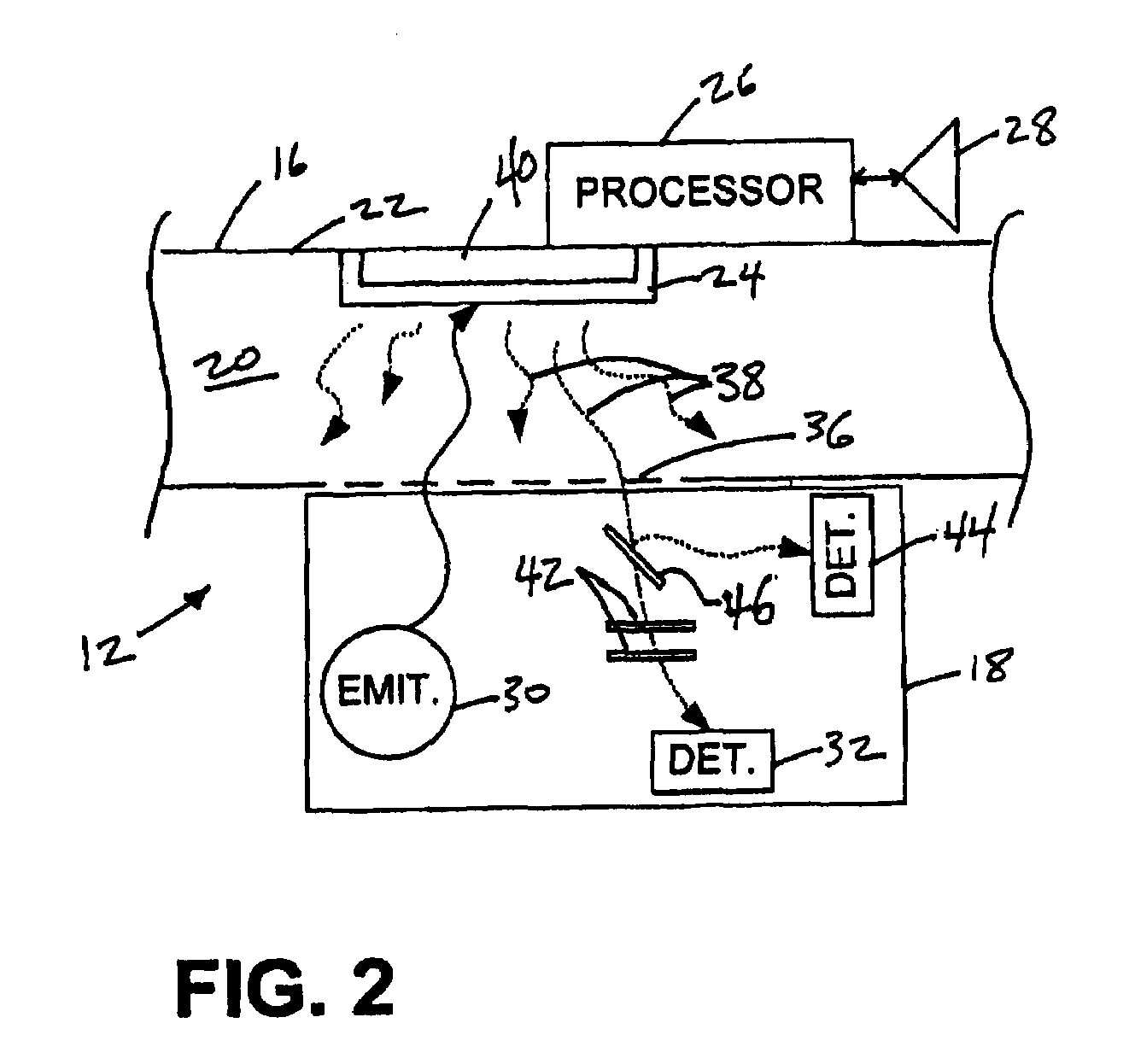Sensor that Compensates for Deterioration of a Luminescable Medium
a technology of luminescent medium and sensor, which is applied in the direction of optical radiation measurement, instruments, spectrometry/spectrophotometry/monochromator, etc., can solve the problems of deterioration of luminescent medium, unreliable conventional sensors of this type, and degradation of accuracy of these luminescence based sensors
- Summary
- Abstract
- Description
- Claims
- Application Information
AI Technical Summary
Benefits of technology
Problems solved by technology
Method used
Image
Examples
Embodiment Construction
[0019]Turning to FIG. 1A, a system 10 configured to determine information related to one or more analytes or constituents in a body gas is illustrated. System 10 includes a sensor 12 and a processor 14. Sensor 12 includes a first sensor section 16 and a second sensor section 18. First sensor section 16 and second sensor section 18 can, in one embodiment, be removably coupled to each other. FIG. 1A illustrates first sensor section 16 uncoupled from second sensor section 18.
[0020]FIG. 1B schematically illustrates system 10 when first sensor section 16 and second sensor section 18 are coupled together. Second sensor section 18 provides a flow path 20 formed by a conduit 22 through which gas may pass. If first sensor section 16 is coupled to second sensor section 18 (e.g., as illustrated in FIG. 1B), first sensor section 16 is operable to generate an output signal that is provided to processor 14 via an operative communication link (e.g., a wired link, a wireless link, a discrete link, ...
PUM
 Login to View More
Login to View More Abstract
Description
Claims
Application Information
 Login to View More
Login to View More - R&D
- Intellectual Property
- Life Sciences
- Materials
- Tech Scout
- Unparalleled Data Quality
- Higher Quality Content
- 60% Fewer Hallucinations
Browse by: Latest US Patents, China's latest patents, Technical Efficacy Thesaurus, Application Domain, Technology Topic, Popular Technical Reports.
© 2025 PatSnap. All rights reserved.Legal|Privacy policy|Modern Slavery Act Transparency Statement|Sitemap|About US| Contact US: help@patsnap.com



